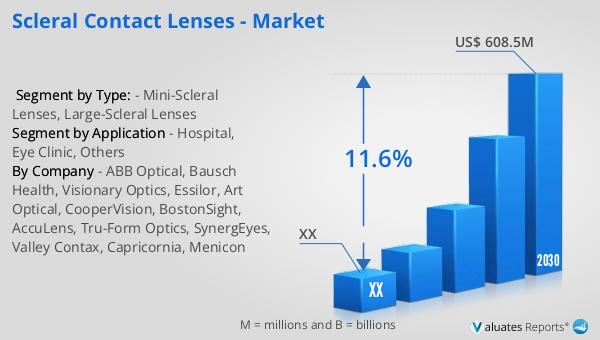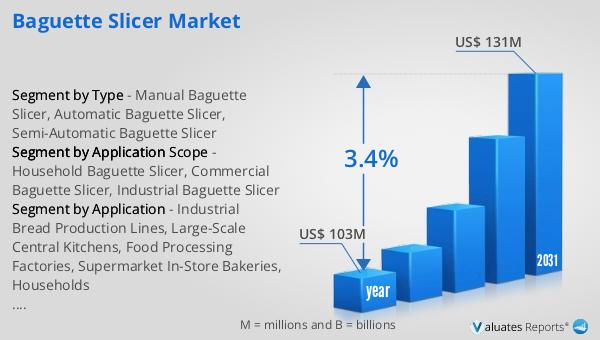What is Scleral Contact Lenses - Global Market?
Scleral contact lenses are a specialized type of contact lens designed to cover the entire corneal surface and extend onto the sclera, which is the white part of the eye. These lenses are larger in diameter compared to traditional contact lenses, providing a unique fit and comfort level for individuals with irregular corneas or severe dry eye conditions. The global market for scleral contact lenses is expanding as more people become aware of their benefits, particularly for those who have struggled with other types of corrective lenses. These lenses create a tear-filled vault over the cornea, offering a smooth optical surface that can significantly improve vision for individuals with conditions such as keratoconus, post-surgical corneal irregularities, or severe dry eyes. The demand for scleral contact lenses is driven by their ability to provide enhanced comfort and visual acuity, making them a preferred choice for patients with complex eye conditions. As technology advances and manufacturing processes improve, the accessibility and affordability of scleral contact lenses are expected to increase, further fueling their adoption in the global market.

Mini-Scleral Lenses, Large-Scleral Lenses in the Scleral Contact Lenses - Global Market:
Mini-scleral lenses and large-scleral lenses are two primary categories within the scleral contact lenses market, each catering to different needs and preferences of users. Mini-scleral lenses typically range from 15 to 18 millimeters in diameter and are designed to vault over the cornea and rest on the sclera. These lenses are particularly beneficial for individuals with mild to moderate corneal irregularities or those who require a more stable lens fit. The smaller size of mini-scleral lenses allows for easier handling and insertion, making them a popular choice among new users or those with dexterity challenges. On the other hand, large-scleral lenses, which can measure up to 24 millimeters in diameter, provide a more extensive coverage of the eye's surface. These lenses are ideal for individuals with severe corneal irregularities, such as advanced keratoconus or post-surgical complications, as they offer a larger tear reservoir and enhanced stability. The increased size of large-scleral lenses also makes them suitable for patients with severe dry eye syndrome, as they create a protective barrier that retains moisture and reduces discomfort. Both mini-scleral and large-scleral lenses are crafted from highly oxygen-permeable materials, ensuring that the cornea receives adequate oxygenation even during extended wear. This feature is crucial for maintaining corneal health and preventing complications associated with hypoxia. The choice between mini-scleral and large-scleral lenses often depends on the specific needs of the patient, the severity of their condition, and their lifestyle preferences. Eye care professionals play a vital role in assessing these factors and recommending the most suitable lens type for each individual. As the global market for scleral contact lenses continues to grow, advancements in lens design and materials are expected to enhance the performance and comfort of both mini-scleral and large-scleral lenses, making them accessible to a broader range of patients. The increasing awareness of the benefits of scleral lenses, coupled with the rising prevalence of eye conditions that require specialized correction, is likely to drive further innovation and adoption in this market segment. As a result, both mini-scleral and large-scleral lenses are poised to play a significant role in the future of vision correction, offering improved quality of life for individuals with complex ocular needs.
Hospital, Eye Clinic, Others in the Scleral Contact Lenses - Global Market:
Scleral contact lenses are increasingly being utilized in various healthcare settings, including hospitals, eye clinics, and other specialized facilities, due to their unique benefits and versatility. In hospitals, scleral lenses are often prescribed for patients with severe ocular surface diseases or those recovering from corneal surgeries. These lenses provide a protective barrier that promotes healing and reduces the risk of infection, making them an essential tool in post-operative care. Additionally, scleral lenses can be used to manage complex cases of corneal irregularities, offering a non-invasive solution that can significantly improve visual outcomes for patients. Eye clinics, on the other hand, are at the forefront of fitting and prescribing scleral contact lenses for a wide range of conditions. Optometrists and ophthalmologists in these settings are trained to assess the specific needs of each patient, ensuring that the lenses are customized for optimal fit and comfort. The use of advanced diagnostic tools and imaging technologies in eye clinics allows for precise measurements and fittings, enhancing the overall effectiveness of scleral lenses. Moreover, eye clinics often provide ongoing support and education for patients, helping them adapt to their new lenses and maintain proper eye health. Beyond hospitals and eye clinics, scleral contact lenses are also gaining popularity in other settings, such as specialty contact lens practices and research institutions. These facilities focus on developing and testing new lens designs and materials, contributing to the continuous improvement of scleral lenses. Additionally, scleral lenses are being explored for their potential applications in sports and occupational settings, where they can offer enhanced visual performance and protection. The versatility of scleral lenses makes them a valuable option for individuals with unique visual demands, such as athletes or professionals working in challenging environments. As the global market for scleral contact lenses expands, the integration of these lenses into various healthcare and specialty settings is expected to increase, providing more patients with access to this innovative vision correction solution.
Scleral Contact Lenses - Global Market Outlook:
The global scleral contact lenses market was valued at approximately $274 million in 2023, and it is projected to grow significantly, reaching an estimated $608.5 million by 2030. This growth is expected to occur at a compound annual growth rate (CAGR) of 11.6% from 2024 to 2030. The market comprises two main types of scleral contact lenses: hard scleral contact lenses and soft scleral contact lenses. Hard scleral lenses are typically made from rigid gas-permeable materials, offering excellent durability and optical clarity. They are particularly beneficial for individuals with severe corneal irregularities or those who require precise vision correction. Soft scleral lenses, on the other hand, are crafted from flexible materials that provide enhanced comfort and adaptability. These lenses are often preferred by individuals with sensitive eyes or those who prioritize comfort over rigidity. The choice between hard and soft scleral lenses depends on various factors, including the patient's specific eye condition, lifestyle preferences, and the recommendations of their eye care professional. As the market for scleral contact lenses continues to evolve, advancements in lens technology and materials are expected to drive further innovation and adoption, offering improved vision correction solutions for a diverse range of patients.
| Report Metric | Details |
| Report Name | Scleral Contact Lenses - Market |
| Forecasted market size in 2030 | US$ 608.5 million |
| CAGR | 11.6% |
| Forecasted years | 2024 - 2030 |
| Segment by Type: |
|
| Segment by Application |
|
| By Region |
|
| By Company | ABB Optical, Bausch Health, Visionary Optics, Essilor, Art Optical, CooperVision, BostonSight, AccuLens, Tru-Form Optics, SynergEyes, Valley Contax, Capricornia, Menicon |
| Forecast units | USD million in value |
| Report coverage | Revenue and volume forecast, company share, competitive landscape, growth factors and trends |
